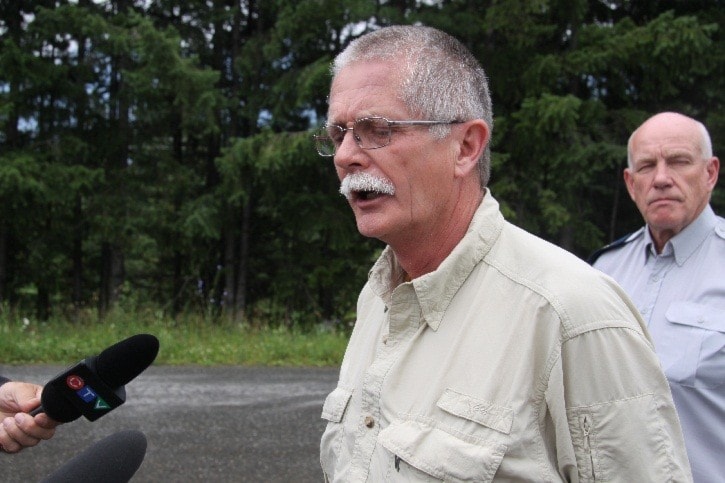Search and rescue crews have located the area where they believe Valentine John Webber’s home stood.
Whitney Numan - search and rescue co-ordinator with Bulkley Valley – said at a press conference this evening that with the help of the regional district search and rescue has sent co-ordinates of Webber’s home’s foundation to the onsite team.
“What search teams have been doing is focusing on a grid search from where the roof was located up passed that over top of the foundation not knowing the exact location and continuing up the hill to Petra Frehse’s house looking for debris indicating that some stuff is there,” said Numan.
RCMP and search and rescue are confirming for the first time that the people missing in the slide are 60-year-old Valentine (Val) John Webber and his daughters 17-year-old Rachel Elizabeth Webber, 22-year-old Diana Katherine Webber, and a 64-year-old German woman Petra Frehse.
Crews had accessed the roof of the Webber home yesterday which is now believed to be at least 40 metres down the slide site.
Now that crews have the co-ordinates, the next step is planning how they will dig down to the cement foundation, where officials, neighbours and family are hoping the family is still alive.
Frehse’s home is completely covered by at between 3 and 5 metres of debris.
“It’s not easy to locate stuff,” said Numan. “ It’s not like an avalanche where you can dig down with shovels, here once you’ve located the foundation we’ll talk about whether or not we can get the excavator in there and that could be problematic given that we don’t know what the soil content is like and the moisture.”
Numan described the consistency of the debris field to concrete.
“It’s almost impossible to dig through it,” he said. “It’s so compacted it’s almost like concrete.You could not put a probe through there.”
Now that crews have a location in their sights, the next step is getting to it, but with stability and safety still a factor, search and rescue are moving cautiously, but efficiently.
“It’s dynamic,” said Numan about the stability of the site. “The spotters are keeping an eye on any further movement or water accumulations up high that could release. We are also looking at trying to find another method of establishing any subtle movements in the debris. We also need to determine how much moisture content is below the surface. People can walk on the debris field. But there is no saying what will happen if we bring an excavator on to it.”
With crews being unable to dig by hand, heavy equipment will be needed to get to the foundation.
Numan said crews would likely begin attempting to access the foundation tomorrow morning.
There are now search and rescue volunteers from Kimberley, Nelson, Kaslo, Campbell River, South Columbia and Bulkley Valley, totalling 31.
Canada Task Force 1 is still on location with 30 crew members on in the area and 25 on site in Johnsons Landing.
